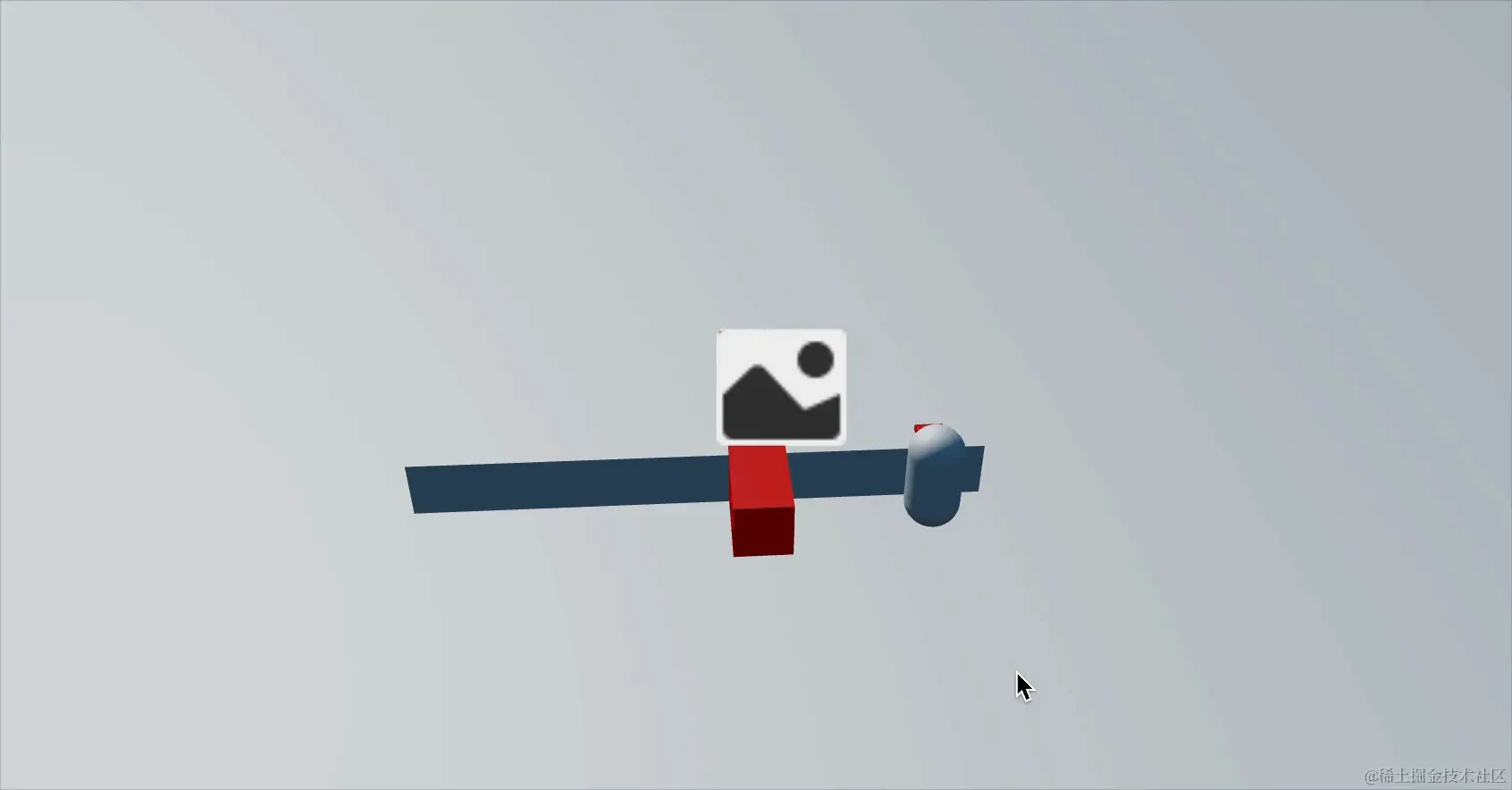
这个例子做的效果并不是很完美,后面还需要优化一下,这里先记录一下这个实现步骤,使用的主要是cocos的内置组件UICoordinateTracker,官方链接:UICoordinateTracker 组件参考 | Cocos Creator
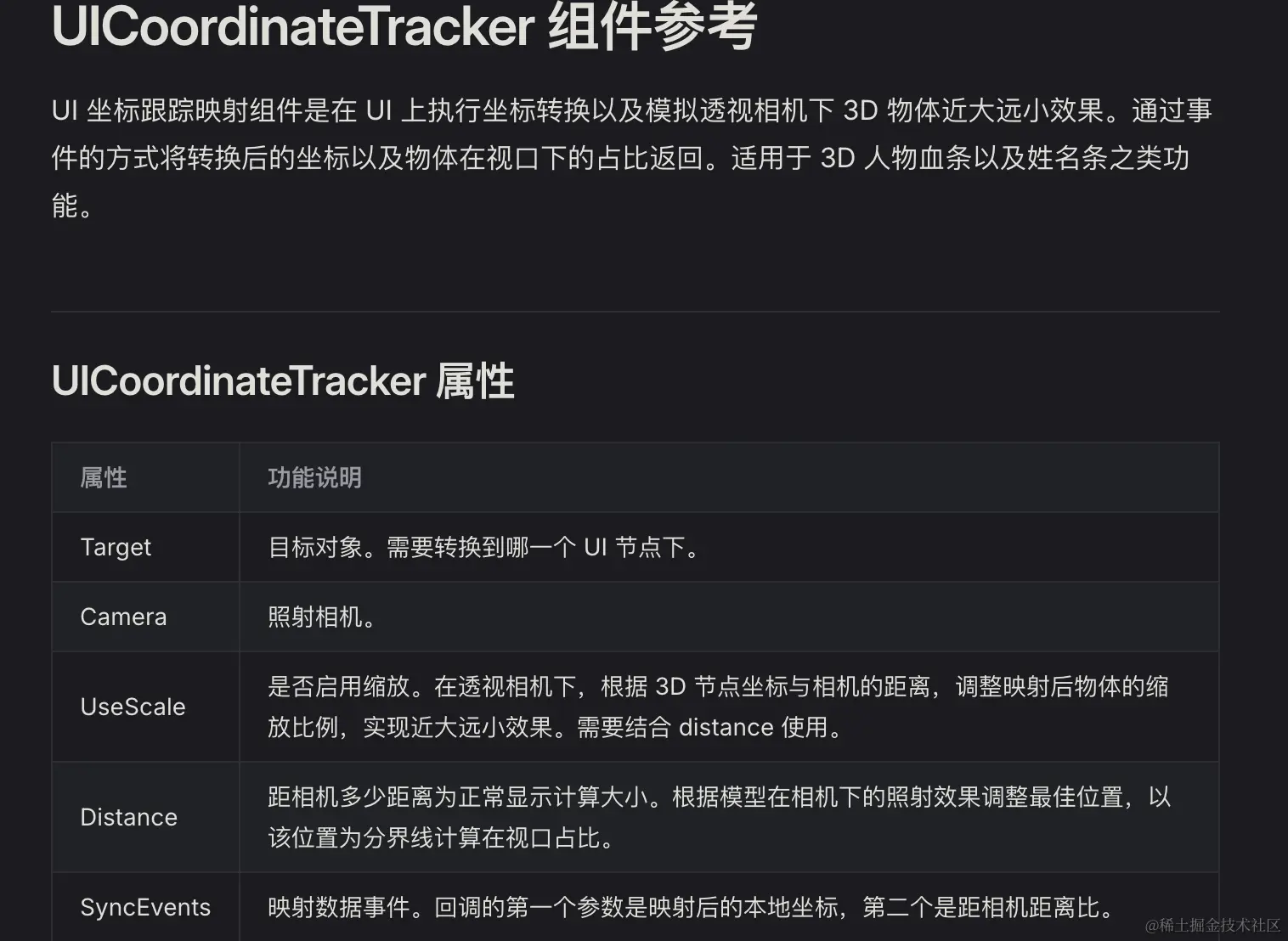
UI 坐标跟踪映射组件是在 UI 上执行坐标转换以及模拟透视相机下 3D 物体近大远小效果。通过事件的方式将转换后的坐标以及物体在视口下的占比返回。适用于 3D 人物血条以及姓名条之类功能。
创建3D节点
创建一个玩家的3d节点,然后在这个节点下创建一个参考节点testnode
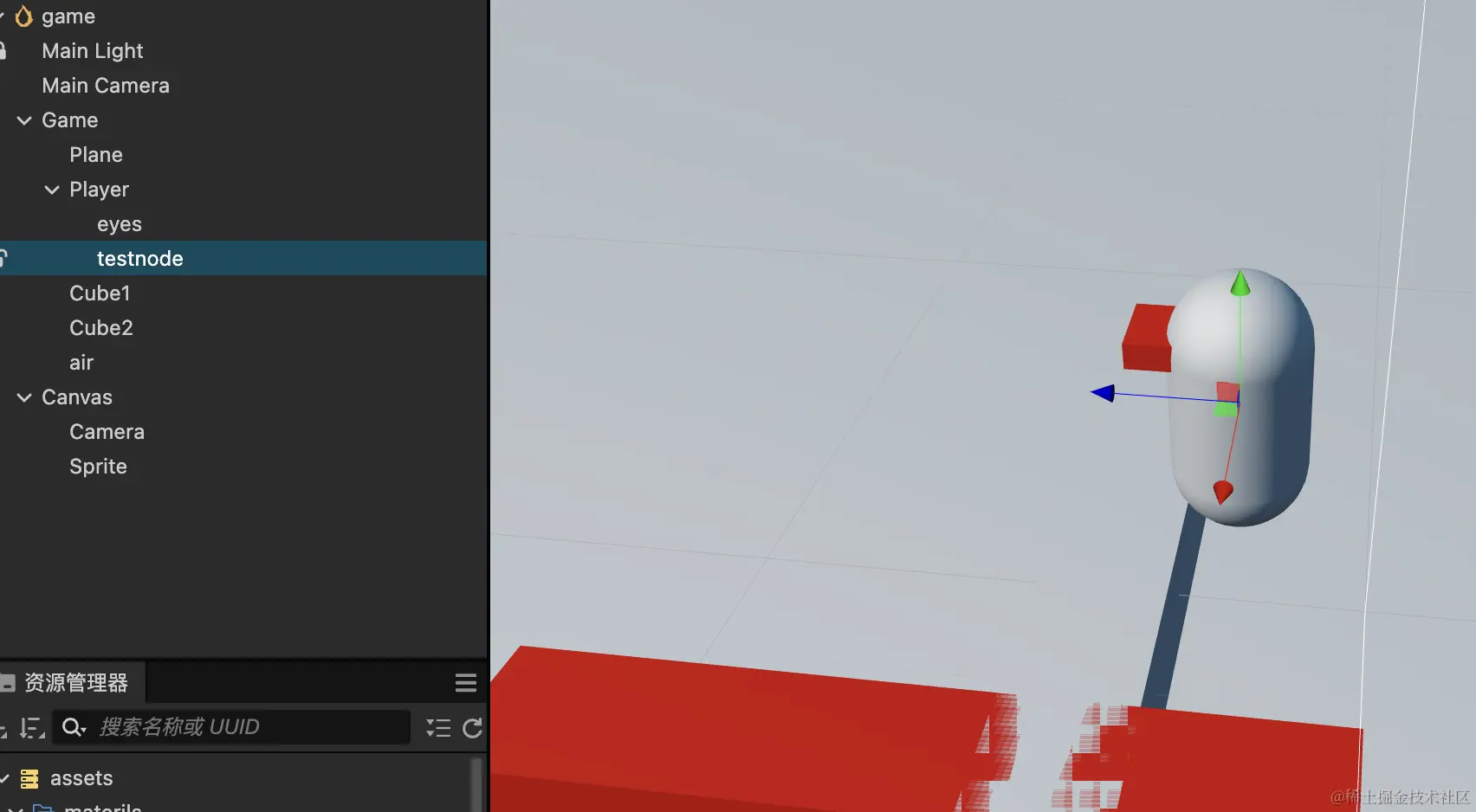
并创建一个精灵图2D节点:
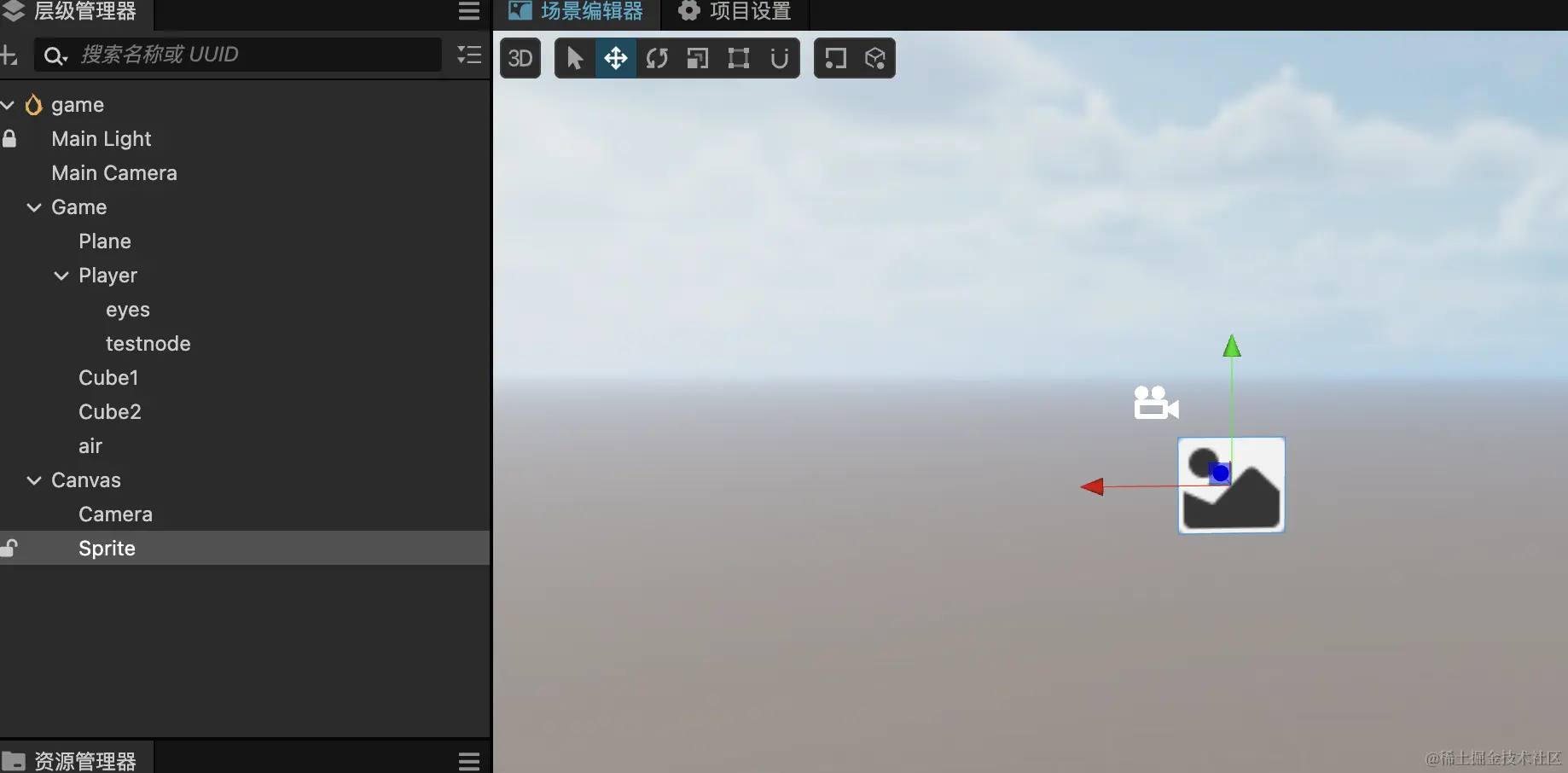
创建一个控制玩家的脚本文件:
javascript
import {
_decorator,
Collider,
Component,
EventKeyboard,
Input,
input,
KeyCode,
Quat,
Vec3,
Node,
Camera,
CCBoolean,
CCFloat,
v3,
} from 'cc'
const { ccclass, property } = _decorator
@ccclass('player')
export class player extends Component {
// input key code
private keyCodeInput = {
A: false,
W: false,
S: false,
D: false,
space: false,
q: false,
e: false,
}
// 移动速度
private moveSpeed = 5
// 旋转速度:度/秒
private rotSpeed = 90
// 移动方向
private moveDirection = new Vec3()
@property(Camera)
camera: Camera = null
@property(Node)
target: Node = null
@property(CCBoolean)
useScale: boolean = true
@property(CCFloat)
distance: number = 10
_canMove: boolean = true
_lastWPos = v3()
_lastCameraPos = v3()
_transformPos = v3()
_viewPos = v3()
start() {
// 启用键盘输入
input.on(Input.EventType.KEY_DOWN, this.onKeyDown, this)
input.on(Input.EventType.KEY_UP, this.onKeyUp, this)
// 启用碰撞检测
const collider = this.node.getComponent(Collider)
if (collider) {
collider.on('onCollisionEnter', this.onCollisionEnter, this)
}
}
onNameSync(
localUIPos: Vec3,
distanceScale: number,
customEventData?: string
) {
this.target.setPosition(localUIPos)
this.target.setScale(distanceScale, distanceScale, 1)
}
onCollisionEnter(event: any) {
console.log('onCollisionEnter---->', event)
}
updateName(deltaTime: number) {
const wPos = this.node.worldPosition
const camera = this.camera
if (
!this._canMove ||
!camera ||
!camera.camera ||
(this._lastWPos.equals(wPos) &&
this._lastCameraPos.equals(camera.node.worldPosition))
) {
return
}
this._lastWPos.set(wPos)
this._lastCameraPos.set(camera.node.worldPosition)
// [HACK]
camera.camera.update()
camera.convertToUINode(wPos, this.target!, this._transformPos)
if (this.useScale) {
Vec3.transformMat4(
this._viewPos,
this.node.worldPosition,
camera.camera.matView
)
}
this.target.setPosition(this._transformPos)
if (this.useScale) {
const data = this.distance / Math.abs(this._viewPos.z)
this.target.setScale(data, data, 1)
}
}
update(deltaTime: number) {
this.updateName(deltaTime)
// 获取当前位置
const currentPos = this.node.getPosition()
// 初始化 移动向量:每一帧要移动的距离,初始为0
const moveDelta = new Vec3(0, 0, 0)
// 根据旋转计算前进方向
if (this.keyCodeInput.W) {
// 获取节点正前方方向(局部坐标系的Z轴正方向)
const forward = new Vec3(0, 0, 1)
// 将qe旋转后的方向,转换为世界坐标系方向(四元数)forward
Vec3.transformQuat(forward, forward, this.node.rotation)
// 归一化方向:将方向向量转换为单位向量(大小为1,只表示方向)
Vec3.normalize(forward, forward)
// 将 移动向量moveDelta 和 当前正前方方向forward 相加 ,然后乘以速度,得到每一帧移动的距离
Vec3.scaleAndAdd(
moveDelta,
moveDelta,
forward,
this.moveSpeed * deltaTime
)
}
if (this.keyCodeInput.S) {
// 后退是正前方的反方向
const backward = new Vec3(0, 0, -1)
// 将 后退方向 转换为世界坐标系方向(四元数)backward
Vec3.transformQuat(backward, backward, this.node.rotation)
// 归一化方向:将方向向量转换为单位向量(大小为1,只表示方向)
Vec3.normalize(backward, backward)
// 将 移动向量moveDelta 和 当前正前方方向forward 相加 ,然后乘以速度,得到每一帧移动的距离
Vec3.scaleAndAdd(
moveDelta,
moveDelta,
backward,
this.moveSpeed * deltaTime
)
}
// 左右平移(使用节点的右方向)
if (this.keyCodeInput.A) {
// 左移是正前方的反方向
const left = new Vec3(1, 0, 0)
// 将 左移方向 转换为世界坐标系方向(四元数)left
Vec3.transformQuat(left, left, this.node.rotation)
// 归一化方向:将方向向量转换为单位向量(大小为1,只表示方向)
Vec3.normalize(left, left)
// 将 移动向量moveDelta 和 当前正前方方向forward 相加 ,然后乘以速度,得到每一帧移动的距离
Vec3.scaleAndAdd(
moveDelta,
moveDelta,
left,
this.moveSpeed * deltaTime
)
}
if (this.keyCodeInput.D) {
// 右移是正前方的反方向
const right = new Vec3(-1, 0, 0)
// 将 右移方向 转换为世界坐标系方向(四元数)right
Vec3.transformQuat(right, right, this.node.rotation)
// 归一化方向:将方向向量转换为单位向量(大小为1,只表示方向)
Vec3.normalize(right, right)
// 将 移动向量moveDelta 和 当前正前方方向forward 相加 ,然后乘以速度,得到每一帧移动的距离
Vec3.scaleAndAdd(
moveDelta,
moveDelta,
right,
this.moveSpeed * deltaTime
)
}
// 上下移动(不受旋转影响)
if (this.keyCodeInput.space) {
moveDelta.y += this.moveSpeed * deltaTime
}
// 旋转
if (this.keyCodeInput.q) {
// 创建一个四元数对象
const rotation = new Quat()
// 从轴和角度创建四元数
Quat.fromAxisAngle(
rotation,
Vec3.UP,
this.rotSpeed * (Math.PI / 180) * deltaTime
)
// 让节点绕Y轴旋转
this.node.rotate(rotation)
}
if (this.keyCodeInput.e) {
// 创建一个四元数对象
const rotation = new Quat()
// 从轴和角度创建四元数
Quat.fromAxisAngle(
rotation,
Vec3.UP,
-this.rotSpeed * (Math.PI / 180) * deltaTime
)
// 让节点绕Y轴旋转
this.node.rotate(rotation)
}
// 将 移动向量(大小和方向) 和 当前位置 相加,得到新的位置currentPos
Vec3.add(currentPos, currentPos, moveDelta)
// 设置节点的新位置(每一帧移动的距离)
this.node.setPosition(currentPos)
}
private onKeyDown(event: EventKeyboard) {
switch (event.keyCode) {
case KeyCode.KEY_A:
console.log('A key pressed')
this.keyCodeInput.A = true
break
case KeyCode.KEY_W:
console.log('W key pressed')
this.keyCodeInput.W = true
break
case KeyCode.SPACE:
console.log('Space key pressed')
this.keyCodeInput.space = true
break
case KeyCode.KEY_S:
console.log('S key pressed')
this.keyCodeInput.S = true
break
case KeyCode.KEY_D:
console.log('D key pressed')
this.keyCodeInput.D = true
break
case KeyCode.KEY_Q:
console.log('Q key pressed')
this.keyCodeInput.q = true
break
case KeyCode.KEY_E:
console.log('E key pressed')
this.keyCodeInput.e = true
break
}
}
private onKeyUp(event: EventKeyboard) {
switch (event.keyCode) {
case KeyCode.KEY_A:
console.log('A key released')
this.keyCodeInput.A = false
break
case KeyCode.KEY_S:
console.log('S key released')
this.keyCodeInput.S = false
break
case KeyCode.KEY_D:
console.log('D key released')
this.keyCodeInput.D = false
break
case KeyCode.KEY_W:
console.log('W key released')
this.keyCodeInput.W = false
break
case KeyCode.SPACE:
console.log('Space key released')
this.keyCodeInput.space = false
break
case KeyCode.KEY_Q:
console.log('Q key released')
this.keyCodeInput.q = false
break
case KeyCode.KEY_E:
console.log('E key released')
this.keyCodeInput.e = false
break
}
}
}将testnode上添加UICoordinateTracker组件,并绑定相关的属性:
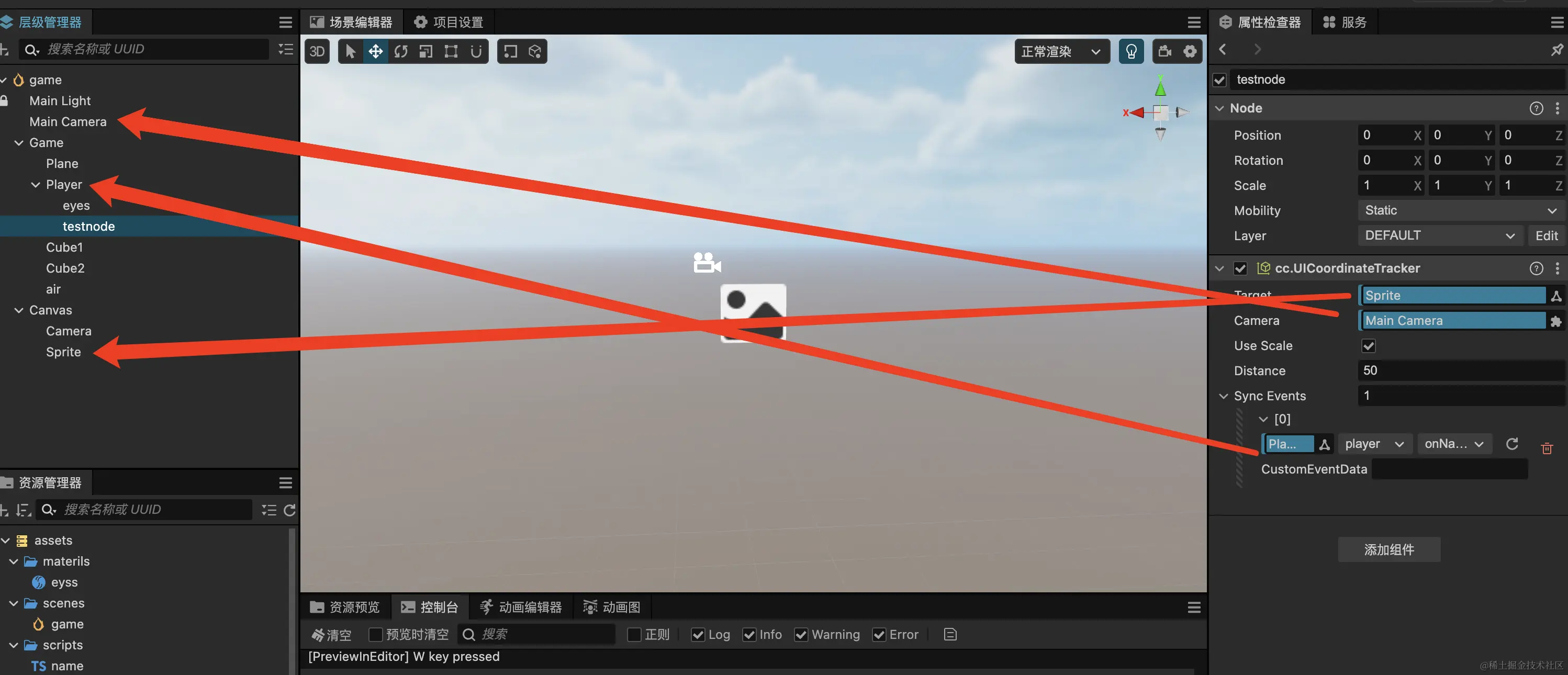
其中异步回掉事件绑定的是脚本中的onNameSync函数。
玩家脚本中绑定的组件对应这几个
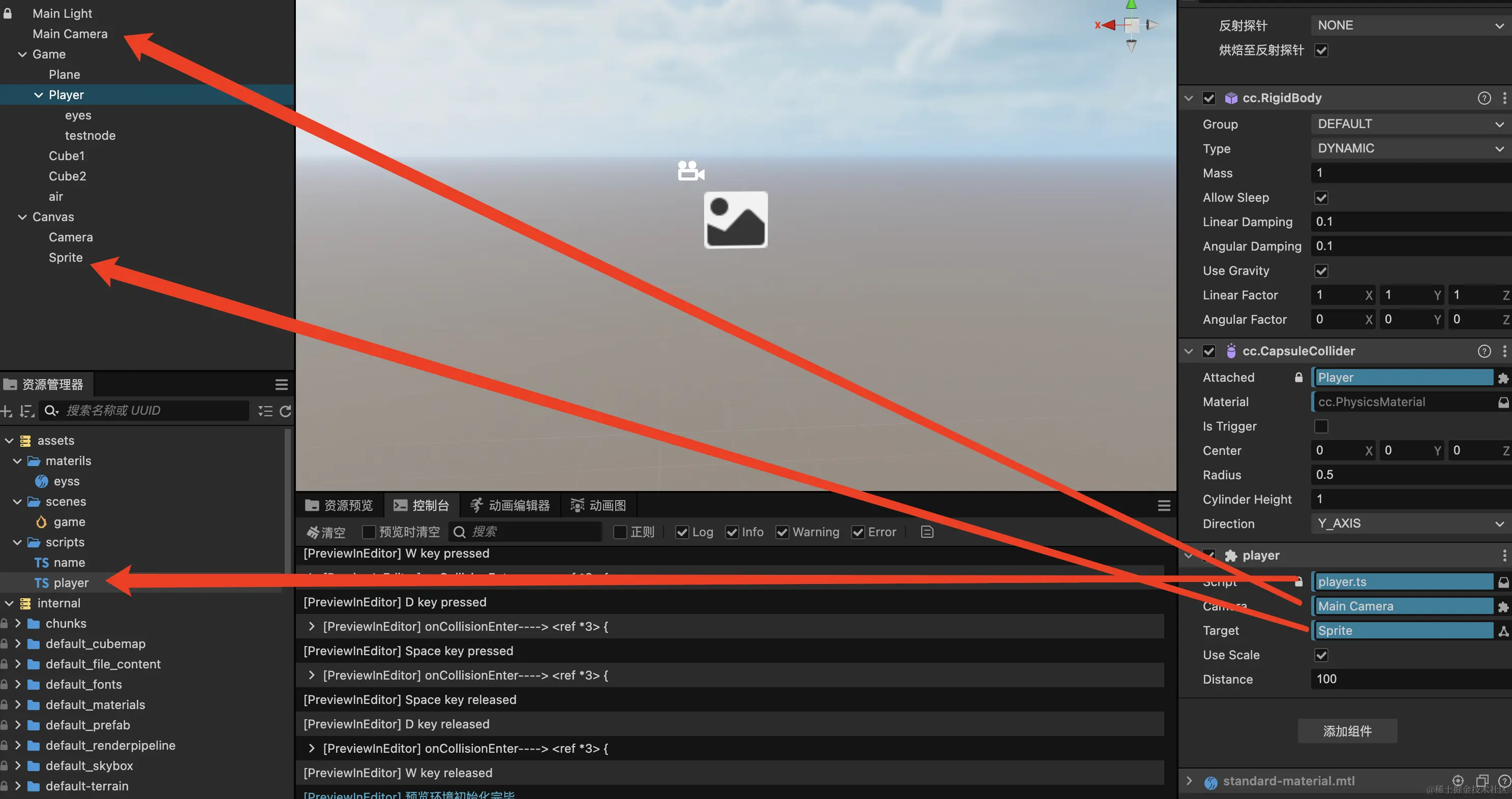
然后就可以运行了